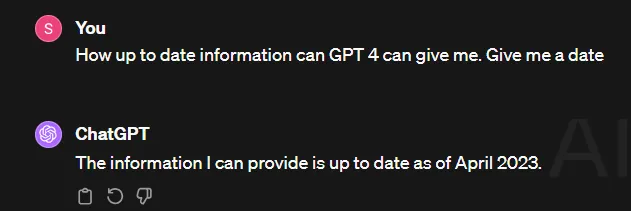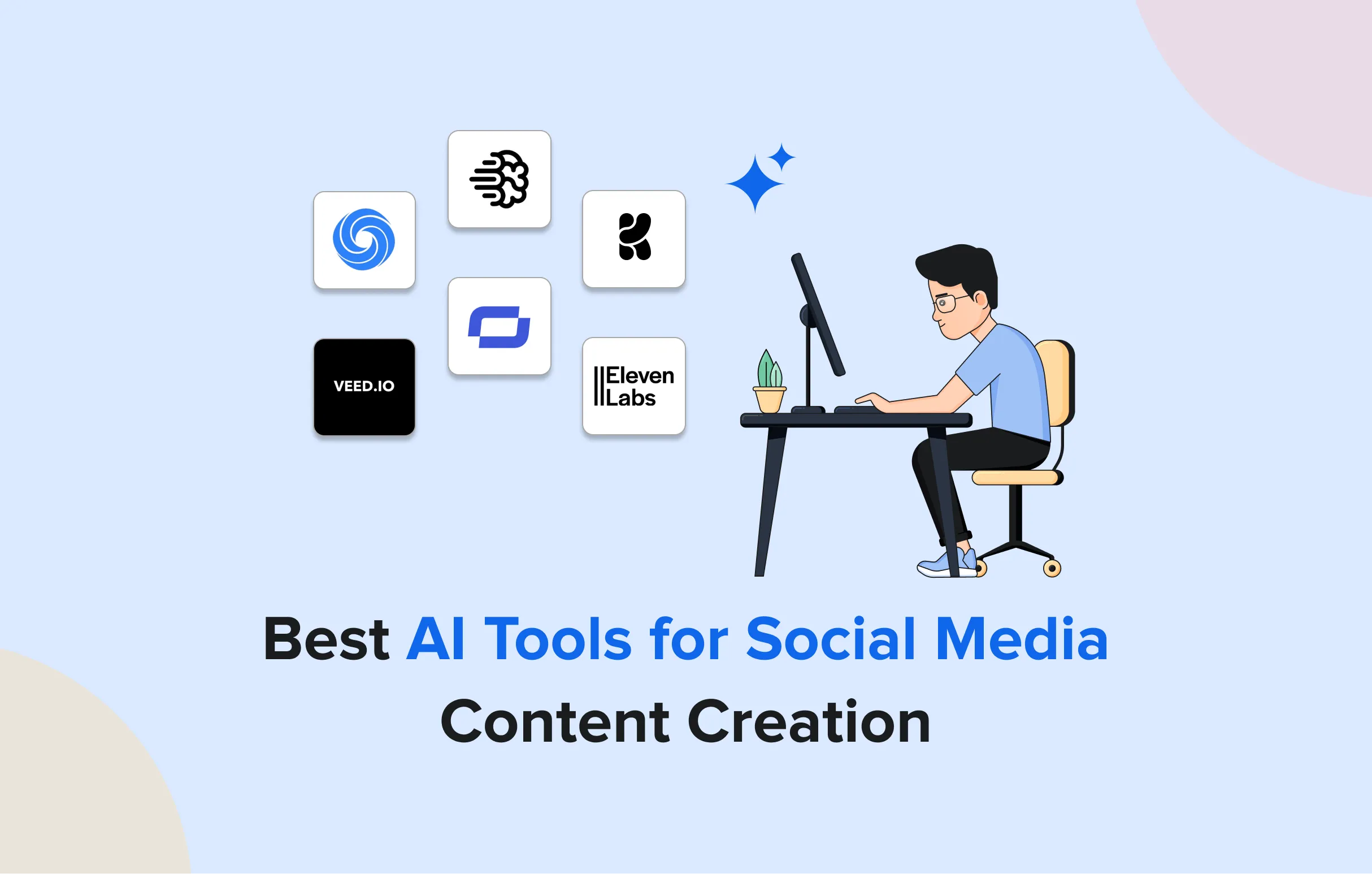Since the launch of tools like ChatGPT and other LLMs, users across the globe have started finding opportunities to leverage them to create content. Nowadays, from email copies, product descriptions, and creating social media campaigns using AI to detailed blog posts, AI-generated content is everywhere.
Everyone, from marketers to brands to common people, is utilizing AI to create SEO-optimized content within a fraction of the time than human writers.
While the ability to create large quantities of content has significantly increased, the question of quality and originality still lingers in the minds of many professionals. Several professionals have sidestepped from using AI in content creation.
The questions that numerous users have asked include:
- Is the content generated by AI original?
- Does using AI content violate Google’s helpful content guidelines?
These questions are just a few examples.
To get to the crux of this conversation, this blog will shed light on the pros and cons of ai-generated content and how you can use AI to create your marketing assets.
But first, let’s get over with the basics.
What’s AI-Generated Content?
AI-generated content, also known as machine-generated content, refers to text, images, videos, or any other form of media that is created with the assistance of Generative AI chatbots.
Unlike traditional content creation methods, where humans are solely responsible for generating the content, AI-generated content involves using algorithms and machine learning techniques to produce content automatically.
These algorithms analyze vast amounts of data, learning patterns, styles, and human writing or content creation structures. The result is content that closely resembles what a human would produce, often indistinguishable from content created by humans.
There are many multiple Generative AI tools, from AI writing tools to text to image generation and, finally, text to videos; these tools increase your efficiency and help you create content that aligns with your target audience’s preferences and interests.
How Does AI-generated Content Work?

The process of AI content creation starts with AI models like ChatGPT or Gemini being trained on large datasets of existing content. These AI models utilize machine learning and natural language processing techniques to understand patterns and structures within the data.
When a user gives a prompt (keyword, phrase, or topic), the AI applies this learned knowledge to generate new content that aligns with specified parameters such as tone, style, and subject matter relevance.
If AI keeps advancing at this pace, its gonna make the internet unusable. AI content will quickly outnumber human content and itll be near impossible to tell the difference. The internet will become a wasteland of chaos and disinformation, and theres nothing we can do to stop it. https://t.co/iVe19kTO3o
— gaz (@Nyazsche) February 15, 2024
This process makes creating content at scale quicker, with outputs tailored to meet specific requirements.
Additionally, you can refine the AI-created content through feedback loops, where human editors provide input to improve the quality and relevance of the generated content.
Or, you can also take inspiration from the prompt examples to give directed inputs to the AI to get the desired outcomes.
Now, let’s jump to the main agenda that you all gathered here for. ⏬
Pros And Cons Of AI-Generated Content

If you’re on a creative path where you must create content that sparks curiosity among the readers and serves their interests and purposes, you should definitely try AI. But you know, there are always some pros and cons related to AI.
Let’s have a look at what are the advantages and disadvantages of using AI to create content:
Pros of AI-Generated Content
1. Creates Content Faster
Generative AI is rapidly changing the way content is created, managed, and delivered. From automating repetitive tasks to generating new ideas, AI is helping businesses produce high-quality content more efficiently, significantly lowering the turnaround time.
You can create a blog post, email newsletter, captions for social media posts, and repurpose your content for social media using AI within minutes (if not seconds). Just enter some prompts, and the AI will do the research for you and create responses within seconds while maintaining accuracy.
2. Makes accessing SEO-friendly content inexpensive
In the initial days, when AI tools had just started flooding the market, everyone was worried that using AI content would get them penalized. However, with time and AI getting more powerful, big names like Google changed their search guidelines on AI-generated content. This made the widespread adoption of AI in content generation easier.
The reason why everyone is so keen on utilizing AI for content and SEO is its ability to quickly understand the target audience and do the initial SEO research. You can use AI to do keyword brainstorming and topic ideation, prepare a list of SEED keywords, and find the target market, demographics, and even psychographics.
All this results in a content writer generating content that serves the intent of the Ideal Customer Persona (ICP) and is backed by research that would have taken multiple days.
3. Highly Scalable
AI content generation offers scalability that traditional content creation methods often cannot match. Whether a business needs to create ten or ten thousand pieces of content, AI can handle the workload efficiently without compromising quality. This scalability enables businesses to effectively adapt to changing content demands and scale their marketing efforts.
4. Stop Writer’s Block
Being out of fresh content ideas or having trouble creating authoritative content from a not-so-known industry is something every writer has faced. Writer’s block is a common problem among many writers, and AI can be a real help in this situation.
AI can help jumpstart writing and inspire creativity by generating content outlines or even producing initial content drafts. Tools like SocialPilot take this one step ahead and let you ideate and create content for all your social media posts with its inbuilt generative AI tool, AI Pilot.
Not done yet?
It helps you overcome writer’s block, create engaging posts, and even fine-tune them to meet your brand voice and social media guidelines. It also suggests relevant hashtags, so your brand gets discovered by its audience.
You can later choose to either save your post as a draft, schedule it, or even publish it right away on different platforms using the SocialPilot app itself.
While there are benefits to leveraging AI in content creation, there are potential pitfalls to over-relying on AI.
Cons of AI-Generated Content
1. Possible Google Devaluation
Though search engines like Google changed their stand from being “helpful content written by people for people” to “Rewarding high-quality content, however it is produced,” the question of quality and human-first content still lingers.
You cannot create content in masses to manipulate search engine rankings and expect Google to reward high ranks in the SERPs. If the content appears too formulaic or fails to demonstrate E-E-A-T (Experience, Expertise, Authority, Trustworthiness) qualities, this can result in lower search engine rankings.
2. Needs to Check Facts
AI-generated content may lack the human ability to verify facts accurately. While AI algorithms can produce text by compiling information from multiple sites and based on learned patterns, they may not always distinguish between accurate and erroneous information.

For example, when I asked ChatGPT about its cut-off date, it told me: “The information I can provide is up to date as of April 2023.”
Due to the outdated information fetched in the system, there is a high chance that ChatGPT or other AIs can give you incorrect information. Human oversight is essential to ensure the factual accuracy of AI-generated content, as inaccuracies can damage the credibility and SEO of your website.
3. Lack of Creativity
Despite how advanced the AI systems become, AI-generated content may still struggle to capture the depth and creativity of human-written content. While it can mimic writing styles and structures, it may lack the nuanced creativity and emotional depth that human writers bring to their work.
As a result, AI-generated content may come across as bland or impersonal, failing to engage readers on a meaningful level.
4. Factual Results, No Grey Areas
AI tends to interpret prompts and data in a binary manner, often missing the nuances and grey areas present in human communication. This can result in content that lacks the subtle insights and contextually relevant information that human writers intuitively provide.
As a result, the AI content may offer factual results but struggle to navigate complex topics or address ambiguous situations effectively.
4 Ways to Use AI-Generated Content Into Your Content Marketing
When considering using AI-generated content in your marketing strategy, it’s important to consider Google’s emphasis on helpful content. Integrating AI into your content strategy is a forward-thinking approach that can greatly enhance your ability to connect with your audience.
However, it’s crucial to use AI content in a responsible and effective manner to avoid any potential negative repercussions.
Here are some of our tried and tested ways you can use AI-generated content effectively:
Generate content ideas based on audience
For people who are just getting started and want to generate content ideas based on the audience’s interests, AI tools can be your starting point. AI tools can analyze data from your website, social media interactions, and customer feedback to understand your audience’s interests, preferences, and needs.
AI can then identify trending topics, unanswered questions, and specific content types that resonate with your target demographics and psychographics.
For instance, I gave a prompt to ChatGPT 4 to help me generate 30 content ideas that our team can use to create content. Here is the result:
Prompt

Result

The result: Personalized content recommendations that serve the intent and interests of the target audience.
Apart from ChatGPT, you can use AI keyword research tools to suggest content ideas or create a topical cluster in seconds.
Fasten your content creation
AI can significantly accelerate your content creation process by automating routine tasks. AI can craft content outlines to give you an idea of what content you can cover, initial content drafts, and even generate full articles on suggested topics.
This allows creators to focus on refining the content and adding their unique insights rather than spending time on the initial drafts.
How to use: Leverage AI content generation tools to produce initial drafts of blog posts, social media content, or video scripts. Review and personalize them to ensure they align with your brand voice and meet your internal quality standards.
Create SEO-optimized content
As we discussed in the first point, AI can help you identify trending keywords in your niche. You can use AI to generate content optimized for those terms. This can boost your rankings in the search engines and drive potential traffic.
But while using AI content, avoid over-reliance on keywords in your content to make them feel forced and unnatural. Check if your content provides real value to your audience and not just random fluff that already exists on the internet.
For instance, if “sustainable living” is trending, use AI to craft an article titled “10 Easy Ways to Reduce Your Carbon Footprint,” then refine it to ensure it reads naturally and offers genuine advice.
Proofread, and run grammar
AI-based grammar and style-checking tools go beyond basic spell checkers to analyze your content for grammatical errors, stylistic issues, and readability. These tools can suggest improvements that make your content more engaging and easier to understand for your audience.
Before publishing any piece of content, you should run it through an AI-powered grammar and style checker. These tools can help identify and correct subtle errors that human editors might overlook, ensuring that your content is polished and professional.
One more thing: don’t overlook the fact that some AI models are trained on a certain period of data. They don’t have the ability to check in real-time and check whether the data is factually correct or not.
Run a manual check or use some tools to check for any incorrect data.
That being said, what if you already created content and want to see whether it feels human or AI?
How to Detect AI-generated Content
AI nowadays has mastered the ability to generate human-like text. This has led to concerns about the potential misuse of AI-generated content, such as spreading misinformation or impersonating individuals. As a result, the demand for tools and techniques to detect this content has grown.
Here are some of our tried-and-tested approaches to detect AI content.
1. Check for repetitiveness
AI tends to repeat phrases or ideas, especially in longer pieces of content. Look for patterns of repetition or redundancy that might not be as common in human-written texts. You might see the words “cheat sheet” or “unlocking” getting used repeatedly.
2. No citations and factual errors
If you ask AI to add statistics or facts to the data, it will add it but not mention the source. Also, while AI can pull information from a vast dataset, it may make factual inaccuracies, especially when generating content on topics that require up-to-date knowledge or deep expertise.
3. Linguistic analysis
This approach involves analyzing the text’s grammatical structure and semantic content to identify features characteristic of AI-generated text.
4. AI detector tools
Finally, the solution that has always worked for our team and me personally is AI content detectors. Just paste the text into this tool, and it will analyze the text to spot patterns of AI, such as certain syntactic structures or the use of specific types of phrases more commonly found in machine-generated text. There are many tools in the market, some good ones are Undetectable’s AI detector, quillbots etc.

*Precaution*
When detecting AI-generated content, it’s essential to approach this task with an understanding that AI is an evolving technology. False positives can occur, where human-generated content is mistakenly considered AI-generated, and vice versa. None of the above-given methods can guarantee 100% accuracy.
Piecing It All Together: AI, An Inevitable Future
In the coming times, when the understanding and ability to respond to AI will improve, more and more content will be generated through it. It’s an inevitable future, so how should one deal with it?
Rather than distancing yourself from using AI-generated content, you should adopt a multifaceted approach that balances human creativity and automation, ensuring content remains authentic, and adds value to your audience.
As we continue to harness its power, let us not forget to create content that drives meaningful connections and impactful storytelling.
Make use of Smart AI tools like SocialPilot to generate content copies that leave a lasting impression on your audience while keeping

